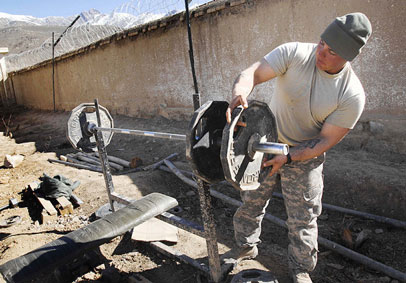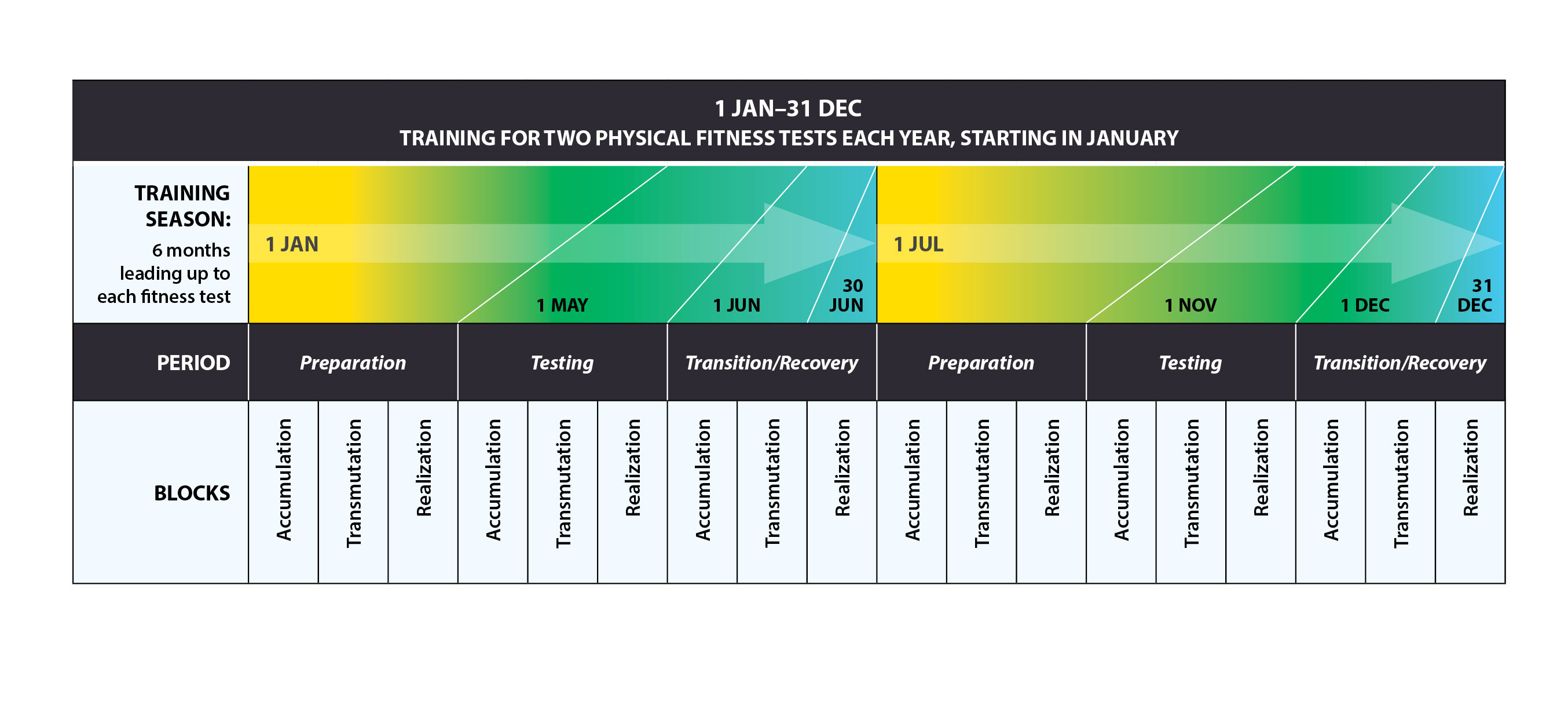Block periodization is a long-term training plan that can help you meet your fitness goals over a calendar year. As you work out and your fitness improves, your body needs a progressive overload—or increased training volume, frequency, and intensity—to keep adapting and getting stronger and to help you lose or maintain weight. Having a plan that spans a few months, rather than weeks, can help you stay focused on your goals and continue to make progress.
Definitions
Volume is the number of exercise sets multiplied by the number of repetitions in each set.
1-repetition maximum (1-rep-max or 1RM) is the most weight you can lift once while maintaining proper form.
Intensity is the amount you lift as a percentage of your 1RM for that exercise. Light intensity = 30–49% 1RM; moderate intensity = 50–69%; vigorous intensity = 70–84%; and near-maximal intensity is 85% or more.
Training load in strength training is the total amount you lift. It’s calculated by multiplying volume by intensity.
Block periodization basics

Block periodization is a road map to an end goal. Basically, you create a schedule that helps you reach peak performance at a certain date, such as your annual fitness test. When followed correctly, block periodization can improve physical fitness and sport-specific performance in both military and civilian populations. When it comes to weight maintenance, a periodized plan can give you structure to help keep you active and burning extra calories each day.
Block periodization breaks your workout routine into different durations at 3 or 4 different levels. The highest level is the “macrocycle” or “training season.” For athletes, there are often 3 macrocycles: preseason training, competition season, and the offseason before preseason training starts again. For Military Service Members, the macrocycles can be defined a few different ways. The most basic would be to divide them based on your bi-annual physical fitness test (PFT). The macrocycle would be about 6 months long and end a couple weeks after you take your test. Another way to set macrocycles can be based on a deployment calendar if your unit is operating on a stable schedule.
The next level down is called the “period.” There are usually 3 periods within each macrocycle: preparation, competition or testing, and transition or recovery. If you’re basing your macrocycles on a PFT schedule, the preparation period could be about 5 months long leading up to the month of your test. The competition or testing period would be the month that you’re required to take your test, and the transition/recovery period is the month after you take your test, where you aim to recover from the more intense preparation and testing periods. The macrocycle ends after the recovery period, and the next one starts again as you prepare for your next PFT.
The next major level down is a “mesocycle,” also known as a block, which is where block periodization gets its name. Typically, each block is 2–6 weeks per area of performance. For example, if you want to improve your push-up or sit-up performance over a 12-week period, you might spend the first 4–6 weeks improving muscular strength to build a base, the middle 2–4 weeks working on muscular endurance, and the last 2 weeks focusing on active recovery and reducing your cumulative fatigue from the previous 10 weeks.
 Choosing the right personal trainer Read More
Choosing the right personal trainer Read More
Within each period, there are typically 3 blocks: accumulation, transmutation, and realization.
Accumulation. The accumulation block, or “concentrated loading,” usually focuses on one component of physical fitness such as speed, power, muscular endurance, or cardiovascular endurance. This block is the base for the blocks that follow and usually lasts 2–6 weeks, depending on the component of fitness you’re trying to improve. Goals for this block are fairly general, such as building strength, as opposed to a specific goal of doing 100 push-ups in 2 minutes. The accumulation block is typically a high-volume, moderate-intensity phase.
Transmutation. During the transmutation block, you reduce your training load for up to 4 weeks to take advantage of the gains you made during the accumulation phase. Here’s where your goals get more specific. If you want to improve your push-up performance on your PT test, you might start doing more exercises that focus on muscular endurance for your chest and triceps. Exercise during the transmutation block is usually a little higher in intensity, but the total volume is lower than during the accumulation block, which reduces your overall training load.
Realization. The last 1–2 weeks are the realization block, when you taper down your training load by reducing your volume even more while maintaining frequency and intensity as you approach event day. Your goal: Reduce the fatigue from your prior weeks of training and let your body recover. This taper shouldn’t be much longer than 2 weeks. Any longer and you could start to lose some of the progress you made in the past 2 months.

Bottom line
It can be complicated to build a customized workout program for a specific goal if you don’t have a strength coach or personal trainer. But using block periodization can add structure—and results—to your workouts. Block periodization is an effective way to work on all areas of fitness, including running speed, cardiovascular endurance, and muscle strength. Weight loss, and better weight management, will come as a byproduct of improved physical fitness. Learn more about block periodization in this article from the National Strength and Conditioning Association. For more help planning your workouts, check out the Navy Operational Fitness and Fueling System (NOFFS) strength and endurance training series.
Learn more at our “Get into Fighting Weight” guide.
